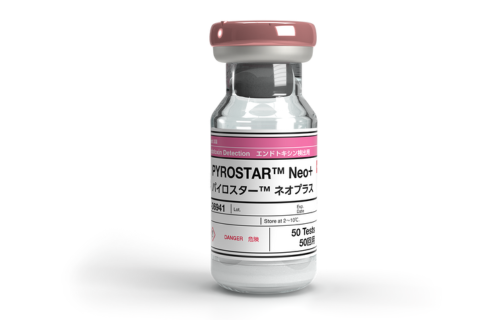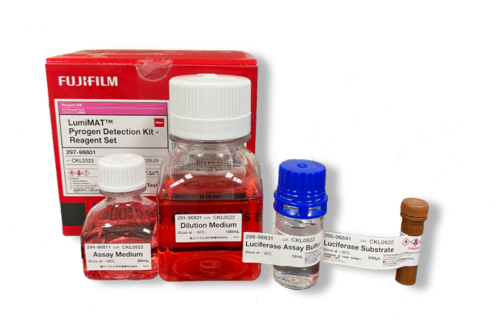EUP Update 2025 - The end of Rabbit Pyrogen Testing (RPT) is near!
When pyrogens are introduced into the human body through non-oral methods, they are detected by the Toll-Like Receptors (TLR) of human monocytes. At specific stages, these pyrogens activate signaling pathways that start immune and inflammatory responses, resulting in the release of internal pyrogens such as IL-6. This can result in severe adverse reactions, which may include fever, inflammatory responses, multiple organ failure, and, in extreme cases, death.
Pyrogens can be divided into two categories: Endotoxin and Non-Endotoxin Pyrogens (NEPs), both of which can cause systemic inflammation.[1]
Rabbit Pyrogen Testing (RPT)
The Rabbit Pyrogen Test (RPT) is a qualitative approach employed to detect pyrogens in parenteral preparations. Hort and Penfold first used it in 1912 while researching the origins of pyrogens that were causing fever in patients receiving injectable treatments.[2]
Technique: This pyrogen testing comprises giving rabbits a test sample and observing any changes in their body temperature. The pharmacopoeias recommended the intravenous (IV) route for testing in the RPT method, as this procedure replicates the way most of the parenteral drugs are typically given.[2]
Drawbacks: The main reason for seeking an alternative to RPT is its questionable accuracy and violation of animal protection.[3]
End of Rabbit Pyrogen Testing (RPT)
In June 2021, the European Pharmacopoeia Commission (EPC) initiated a process aiming to completely remove Rabbit Pyrogen Test (RPT) from the European Pharmacopoeia (Ph. Eur.) within approximately 5 years. In a recent announcement at its 179th session in June 2024, the EPC stated their huge efforts in revising 57 texts and implementing a new chapter (Pyrogenicity 5.1.13) aiming for the upcoming complete removal of RPT. The revised texts are set to be included in the European Pharmacopoeia (Supplement 11.8) and will take effect on 1 July 2025, marking the end of the RPT era in the European Pharmacopoeia.
Consequently, the requirement of using the RPT will no longer be necessary in any Ph. Eur. text. Pharmaceutical developers will be responsible for selecting an appropriate in vitro test to ensure their product is free from pyrogenicity. This selection should be based on a risk assessment outlined in the new general chapter.
MAT (Monocyte-Activation Test) as an alternative
The Rabbit Pyrogen Test (RPT) used to be the standard method for testing pyrogenicity. However, scientific progress has led to the development of new and more humane alternatives, such as the in vitro Monocyte-Activation Test (MAT).
The Monocyte-Activation Test (MAT) was officially included in the European Pharmacopoeia (Ph. Eur.) in 2009 as a recognized in vitro alternative to the RPT.[4]
In the conference entitled "The Future Of Pyrogenicity Testing: Phasing Out The Rabbit Pyrogen Test" the European Directorate for the Quality of Medicines & HealthCare, the Council of Europe, and the European Partnership for Alternative Approaches to Animal Testing emphasized the replacement of RPT and acceptance of in vitro alternatives like MAT.[4]
Functioning: Monocytes are formed by the body's natural defense system and have Toll-Like Receptors (TLRs) that can recognize and bind to pyrogens. When pyrogens bind to the receptors, it triggers the release of pro-inflammatory cytokines like IL-6, IL-1β, or TNFα, which can be quantified. The level of cytokine released indicates the pyrogenic nature of a substance. By using human-derived monocytes, this method replicates the fever response to pyrogens in living organisms, making it a strong contender for accurately simulating the effects of drugs in humans.
Advantage: The MAT is human-specific, has high sensitivity, can detect both endotoxin and non-endotoxin pyrogens, and is more readily transferable to human in vivo reactions.[4]
The MAT is proposed as an alternative technique for gathering quantitative data in a system that evaluates human inflammatory responses. This supports the adoption of a consistent approach to guarantee the safety, effectiveness, and quality of drugs, medical devices, and vaccines. When effectively implemented, this could significantly decrease or eliminate the necessity for animal testing in routine evaluations performed by national control laboratories.[2]
References
- Solati S, Zhang T, Timman S: The monocyte activation test detects potentiated cytokine release resulting from the synergistic effect of endotoxin and non-endotoxin pyrogens. Innate immunity 2022, 28(3-4):130-137.
- Vipond C, Findlay L, Feavers I, Care R: Limitations of the rabbit pyrogen test for assessing meningococcal OMV based vaccines. Altex 2016, 33(1):47-53.
- Valentini S, Santoro G, Baffetta F, Franceschi S, Paludi M, Brandini E, Gherardini L, Serruto D, Capecchi B: Monocyte-activation test to reliably measure the pyrogenic content of a vaccine: An in vitro pyrogen test to overcome in vivo limitations. Vaccine 2019, 37(29):3754-3760.
- Cirefice G, Schütte K, Spreitzer I, Charton E, Shaid S, Viviani L, Rubbrecht M, Manou I: The future of pyrogenicity testing: Phasing out the rabbit pyrogen test. A meeting report. Biologicals : journal of the International Association of Biological Standardization 2023, 84:101702.






